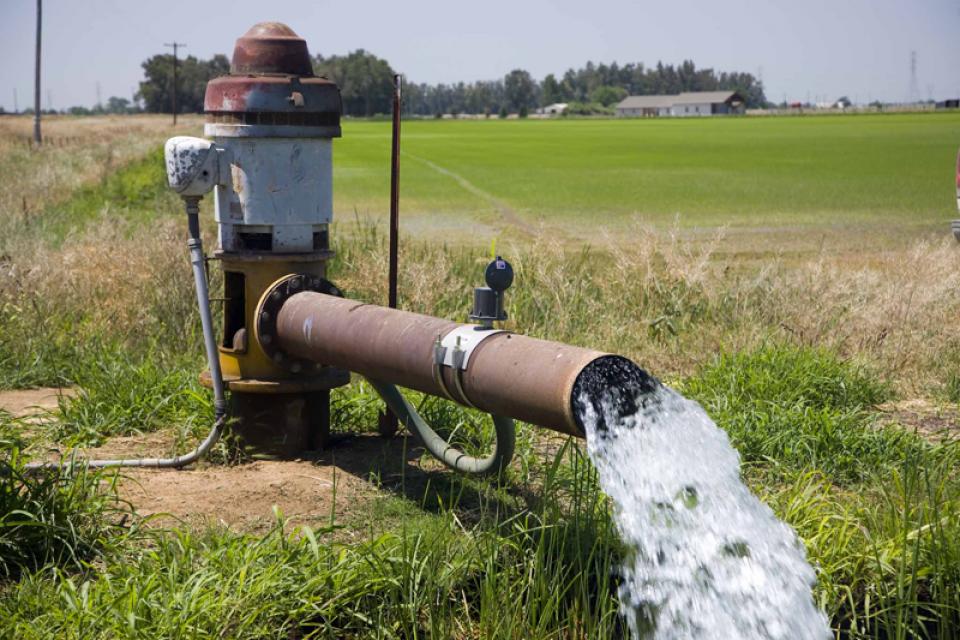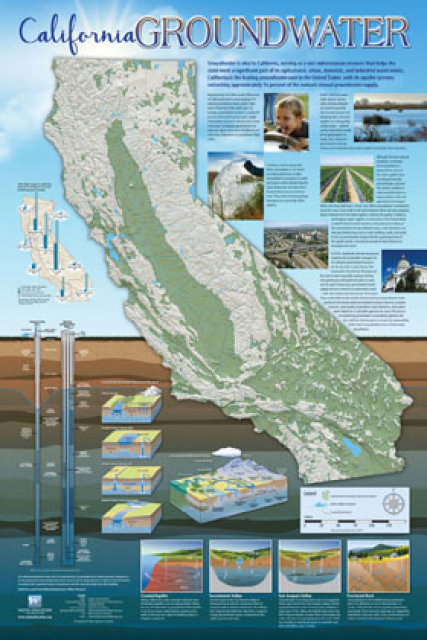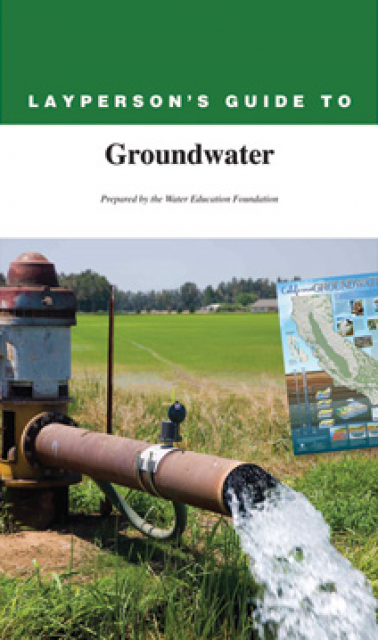Groundwater Management
 Groundwater management is recognized
as critical to supporting the long-term viability of California’s
aquifers and protecting the
nearby surface waters that are connected to groundwater.
Groundwater management is recognized
as critical to supporting the long-term viability of California’s
aquifers and protecting the
nearby surface waters that are connected to groundwater.
Groundwater provides between 40 percent and 50 percent of California’s total annual agricultural and urban water supply in an average year. During drought, that figure reaches as much as 60 percent. Some parts of the state are entirely dependent on groundwater for their supply.
Yet some regions of California are pumping out more groundwater than is replenished. Statewide, that overdraft averages between 1 million acre-feet and 2 million acre-feet per year. Several problems are associated with overdraft, such as the increased energy costs to pump water, the mobilization of toxic materials and land subsidence.
In California, landowners are in general entitled to the reasonable use of groundwater on property overlying the groundwater basin.
After a long history of treating groundwater as a virtually unregulated resource, California in 2014 became the last Western state to regulate groundwater through the Sustainable Groundwater Management Act (SGMA), a bottom-up approach that requires local groundwater agencies to show how they will sustainably pump groundwater by 2040.
Prior to SGMA, local groundwater management occurred by local agencies under legislation enacted in 1992, management by special districts, city and county ordinances or court adjudications.
Groundwater Management Overview
In 1992 the California Legislature enacted Assembly Bill 3030 that allowed local governments to create groundwater management districts and gave the districts the authority to charge fees to pay for management of the groundwater. The law allowed local agencies to develop groundwater management plans to deal with seawater intrusion, wellhead protection, recharge, groundwater cleanup, overdraft, conjunctive use, storage, conservation, recycling and extraction projects.
Subsequent legislation in 2002 required public agencies seeking state funding for groundwater projects to submit a management plan to the California Department of Water Resources with specified components. However, the plans were strictly voluntary and did not allow local entities to control extractions from the groundwater basin. Overdraft and land subsidence continued to be a problem in many areas.
In 2009, the California Statewide Groundwater Elevation Monitoring (CASGEM) Program was created to collect groundwater elevation information and compile it in an online system with a Geographic Information System map interface. CASGEM, which does not track individual groundwater well extraction, instead covers seasonal and long-term trends in California’s groundwater basins.
Sustainable Groundwater Management Act
In 2014, SGMA was signed into law, providing a state framework to regulate groundwater for the first time in California history. The law stipulated that it is not a “one size fits all” approach and that each groundwater basin is different. It did not remove the distinction between surface water rights and the personal, private property right to pump groundwater and does not allow the disclosure of how much water an individual pumps.
SGMA:
- Established a definition of sustainable groundwater management
- Established a framework for local agencies to develop plans and implement strategies to sustainably manage groundwater resources
- Prioritized basins with the greatest problems (ranked as high- and medium-priority)
- Set a 20-year timeline for implementation
Exactly how sustainability will be achieved under SGMA is a continuing issue. Local sustainability plans will include water budgets, financing mechanisms and the recognition that limitations in pumping are necessary to achieve sustainability.
Groundwater Management Going Forward
SGMA identified 43 groundwater basins as high-priority and 84 as medium-priority. These 127 basins account for about 96 percent of the groundwater used in the state. Most of these basins are in the Central Valley or along the Central and South Coast. Many are currently in overdraft. The basins were required to adopt groundwater management plans by 2020 or 2022, depending upon whether the basin is in critical overdraft. Overall, groundwater sustainability agencies have until 2040 or 2042 to achieve groundwater sustainability.
If the deadlines aren’t met, the State Water Resources Control Board can intervene and establish an interim plan, after public notice and hearing. The state, according to the SGMA, can intervene only in extreme conditions when local control is inadequate.











